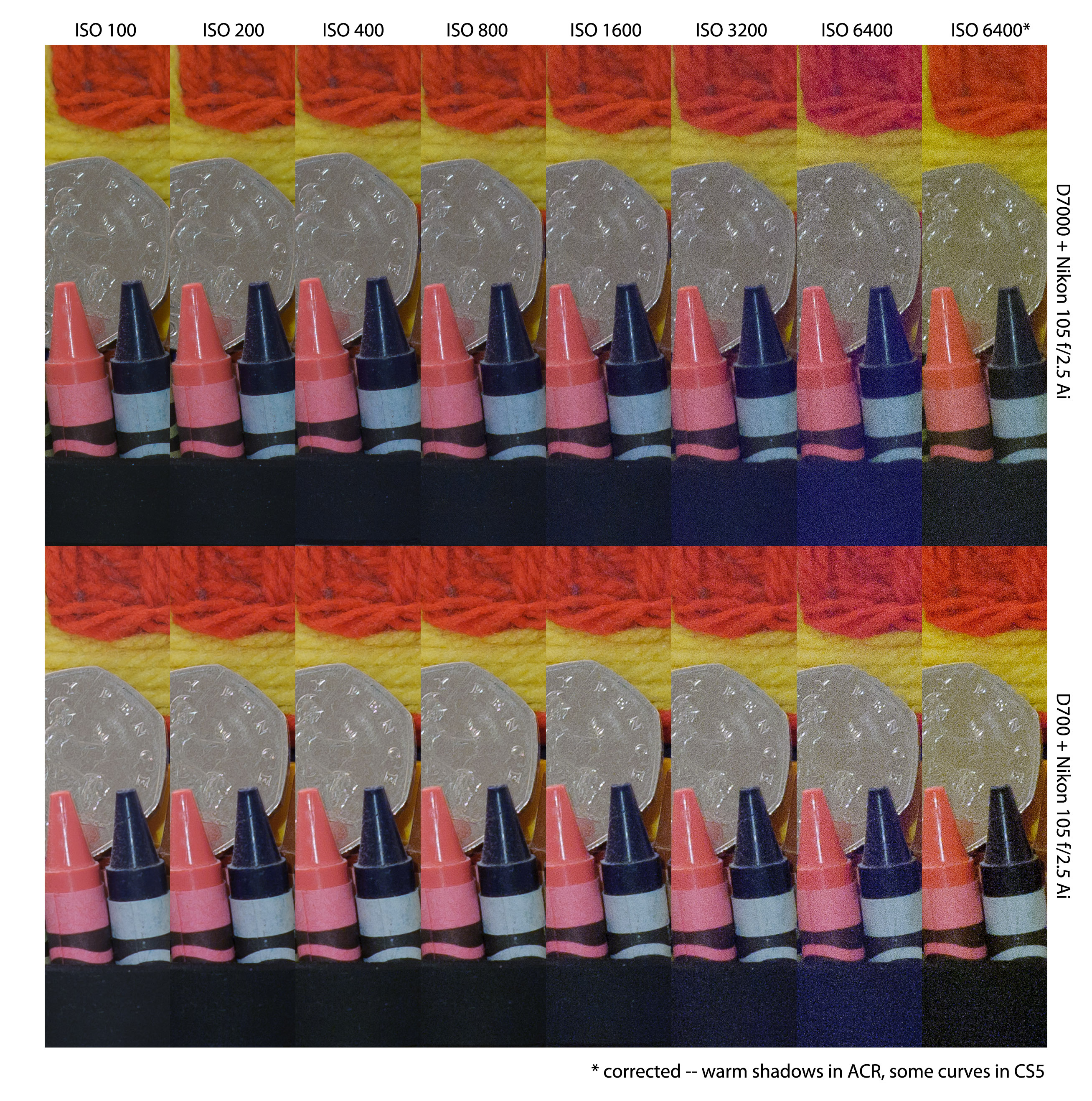First, let me define really bad light: old halogen lamps dialed down with a dimmer so they glow bright orange from behind and above the subject, ugly compact fluorescent bulbs coming from another room in front of the subject. Total light giving an exposure of 2s at f/5.6 at ISO 100. That’s about 1/15s at 3200 ISO at 5.6, which is what you would be using with a kit lens indoors in a typical living room at night.
On with the show … one thing that has impressed me since getting the D7000 is how good it is at 6400 ISO. The D300 was a revelation when I first got it and I put images at 6400 ISO on my blog. But they were a little dodgy and certainly required massive effort to process.
Not so with the D7000. It has only one real flaw, which is shared by the D700 by the way, and that’s the tendency to turn shadows blue when correcting white balance shot in RAW at higher ISOs. I have always found that the smaller the photosites, the more pronounced the effect.
I have speculated that the absence of blue light in the original image makes the neutrals with little info in the first place (i.e.20,20,1) very vulnerable to the extreme blue channel push that occurs during white balance adjustment. At higher ISOs this is probably aggravated because the neutrals also have a lot of noise in them, so some photosites in the dark neutrals contain false data that gets pumped up heavily by the blue channel shift and veritably glow blue.
You will see this effect in the following ISO ladder.
Obviously, you absolutely must click through to the full sized image, which is huge.
A comment on methodology. Obviously, I shot each of these from tripod. I shot from the same distance with the same lens, which gives the D7000 a 50% magnification advantage. I have to make that up by enlarging the D700 image to match field of view. The D7000 has another advantage (sort of), more pixels. To handle that, I downsize the D7000 to match the original dimensions of the D700. Then I crop to match for the ladder.
Now, these are all shot in RAW. I set the processing to match the 100 ISO (low 1) image in both cases. Then I used the same processing all along, which left the blue channel and noise without any response from me. This gives you an idea of what you must deal with when processing either camera.
My observations on the ISO ladder:
- The D700 displays slightly higher acuity. That is likely a subtle difference in processing or in manual focus (it was an Ai lens, remember) so ignore it.
- Details are finer on the D7000. That is a combination of the downsizing of the D7000 and the severe upsizing of the D700. Ignore it.
- Both cameras retain excellent saturation all the way to 1600 ISO. The D7000 flags at 3200 and the D700 at 6400. One stop difference, and that should be no surprise.
- Deep shadows are turning blue on both cameras starting at about 1600 ISO. The D7000 shows some tendency by 800, but it is not too bad yet. The cameras move in lock step, but the effect is always stronger on the D7000, which makes sense when you consider the photosite size difference.
- Details on the face of the coin show some different. The arm is more visible at 1600 and 3200 ISO on the D7000 shot. This advantage again makes sense.
- At the higher ISOs, I’d say that the saturation and 3 dimensionality is about one stop apart. Possibly a bit less. But the key here is that the results from both are quite usable at 6400 ISO if you know how to handle noise. So I’m really impressed that the D7000 can play in this league at all.
Now, to show what I mean about the 6400 ISO images being usable, here are the two of them processed for the web. I could probably make a decent 8x10 from them if pushed.
D7000
D700
Both look as good as a lot of Facebook snapshots I see at base ISO … these cameras have the chops for sure. And remember … this was some of the worst light in which you might consider shooting without flash.



No comments:
Post a Comment